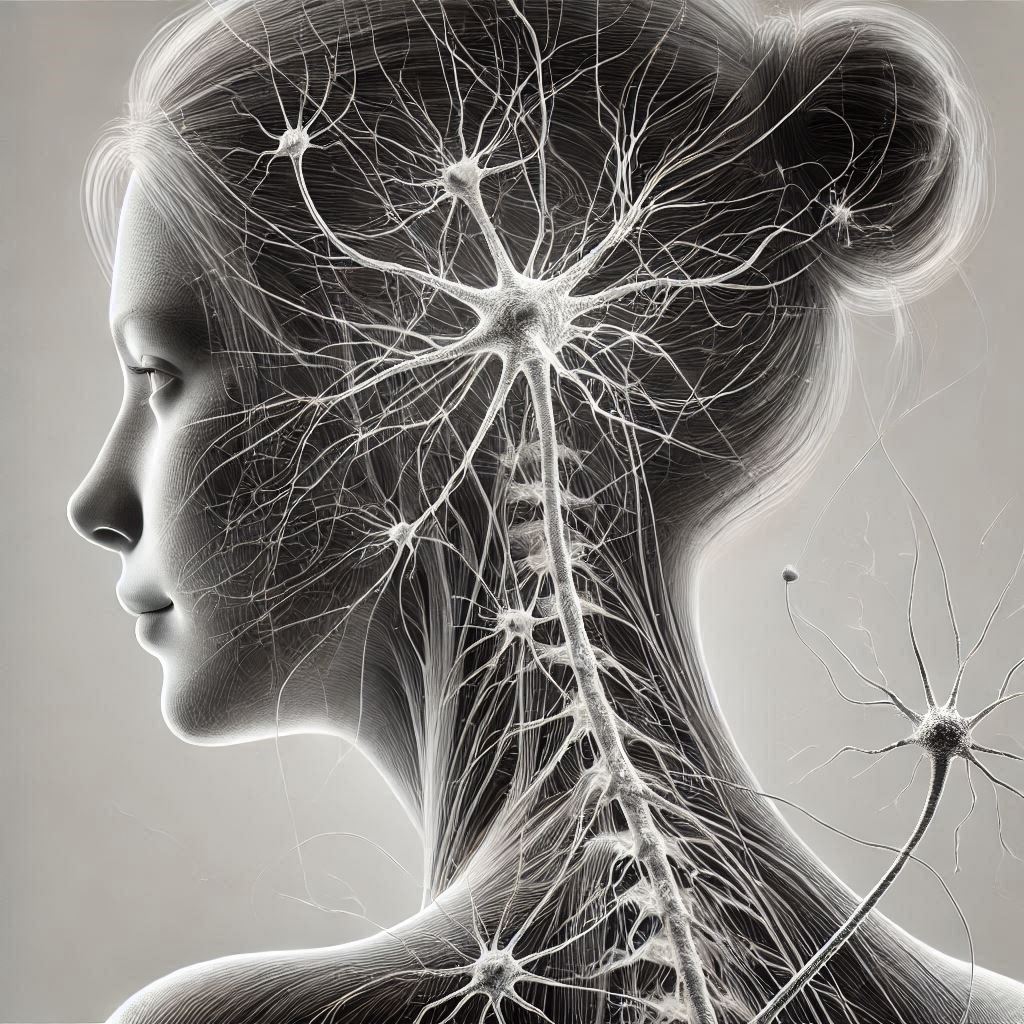Ever found yourself suddenly gripped by an intense fear that seems to come out of nowhere? This is what experts refer to as a “fit of terror.” Often linked to panic attacks and extreme anxiety, a fit of terror manifests as overwhelming fear or anxiety that can make you feel like you’re losing control.
In today’s fast-paced world, it’s not uncommon for people to experience these episodes due to stress, traumatic events, or even seemingly benign situations that trigger an intense emotional response. Understanding what a fit of terror is and recognizing its symptoms is crucial as it’s a key step toward managing and overcoming these frightening moments. Stay tuned to learn how to identify, address, and ultimately conquer these episodes for a more balanced and peaceful life.
Definition of Fit of Terror
A “fit of terror” is an overwhelming burst of fear or panic that can occur suddenly. Unlike a general sense of anxiety or fear, this intense feeling can be debilitating and may last anywhere from a few moments to several minutes. It’s more severe than routine stress or worry and comes with noticeable physical and psychological symptoms. Understanding this phenomenon can help us better identify and address these episodes in our lives.
Psychological Perspective
From a psychological perspective, a fit of terror affects how we think and feel. When you experience this kind of terror, your brain goes into overdrive. It’s like seeing a scary movie but in real life—you feel like you’re in danger even if you’re not.
- Fight or Flight Response: This is a critical aspect of how our brains process terror. When confronted with something perceived as threatening, our body’s ancient survival mechanism kicks in, leading us to either confront the threat (fight) or escape from it (flight).
- Cognitive Distortion: During these fits, our brain might blow things out of proportion. It can make a small problem seem gigantic. Imagine worrying about a test and suddenly feeling like failing it will ruin your entire life—that’s cognitive distortion at work.
- Emotional Flooding: This is when intense emotions like fear and panic overwhelm us. It feels like waves crashing over and over, making it hard to think straight or calm down.
Understanding how these psychological elements play into a fit of terror can help us take controlled steps towards managing them better.
Physical Symptoms
When experiencing a fit of terror, your body reacts strongly. It’s not all in your head—there are real, physical changes happening that make you feel this way.
- Increased Heart Rate: Your heart starts to beat faster as blood pumps more quickly through your body. It’s preparing your muscles to either run or fight.
- Sweating: Your body tries to cool itself down in case you need to act quickly. This can make you sweat a lot, even if you’re not doing anything strenuous.
- Trembling or Shaking: Your muscles might twitch or shake as adrenaline surges through your system. It can feel like shivering when you’re cold, but more intense.
- Shortness of Breath: You might feel like you can’t catch your breath. This happens because your body is trying to take in more oxygen to fuel your muscles.
Sometimes, throwing in techniques like deep breathing exercises or methods to stay grounded can help manage these physical reactions. It’s a way to let your brain know that you are not in immediate danger.
Understanding both the psychological and physical components of a fit of terror can make it easier to recognize and deal with these intense moments when they arise. It’s not just about knowing what happens – it’s also about finding ways to cope.
For more information on handling extreme anxiety and panic, check out Mental Health America for valuable resources.
Causes and Triggers
Understanding the root causes and triggers of a fit of terror is crucial. These episodes are often influenced by a combination of psychological factors and environmental stimuli.
Psychological Causes
Fit of terror, or panic attacks, frequently arise from psychological issues. Mental health conditions play a significant role.
- Anxiety Disorders: Many who suffer from fits of terror have underlying anxiety disorders. Generalized anxiety disorder, social anxiety, and panic disorder often lead to these intense, sudden fears. Imagine living your life constantly feeling like something terrible is about to happen—that’s how many with anxiety disorders feel daily.
- Past Trauma: Traumatic events from the past, such as abuse or an accident, leave deep scars. These experiences can trigger fits of terror long after the event. Just like a scar that heals on the surface but aches during certain weather conditions, trauma can resurface unpredictably.
- Phobias: Specific phobias, such as claustrophobia (fear of confined spaces) or acrophobia (fear of heights), can cause fits of terror. When someone encounters their fear, their body reacts as if in real danger, leading to a sudden onslaught of intense fear.
Recognizing the psychological causes of these episodes can help in seeking appropriate therapy and interventions. For more help, visiting Mental Health America can provide valuable insights.
Environmental Triggers
External factors play a pivotal role in triggering fits of terror. Sometimes our surroundings or situations amplify our fears.
- Stressful Situations: Everyday stressors such as work deadlines, financial troubles, or family conflicts can act as triggers. Imagine juggling multiple balls in the air; the moment one falls, it disrupts the whole act. Similarly, a small stressor can topple emotional balance, leading to an episode.
- Sudden Changes: Unexpected changes, like moving to a new city or losing a job, can precipitate fits of terror. Think of these changes as unexpected jolts that shake our foundational stability.
- Specific Phobias: Encountering phobia-inducing situations or objects can provoke fits of terror. For instance, someone with a fear of spiders might experience a panic attack on seeing one suddenly. It’s akin to flipping a switch that lights up fear instantly.
Understanding environmental triggers helps in strategizing ways to manage or avoid situations that lead to fits of terror. For those experiencing these triggers, Penn Medicine provides more detailed information on managing stress and identifying triggers.
By identifying both the psychological and environmental factors contributing to fits of terror, people can better prepare themselves and seek out resources like Mayo Clinic’s articles on mental health for support. [object Object][object Object]
Coping Mechanisms
Managing fits of terror can be daunting, but there are effective strategies to help you regain control. By combining immediate response techniques with long-term management approaches, you can create a comprehensive plan to handle these intense moments.
Immediate Response Techniques
When experiencing a fit of terror, it’s essential to have strategies in place that provide immediate relief. Here are a few techniques that can be of great help:
- Deep Breathing Exercises: One of the quickest ways to calm down is by focusing on your breath. Try taking slow, deep breaths, in through your nose and out through your mouth. Count to four as you inhale, hold for four, and then exhale for another four seconds.
- Grounding Techniques: These techniques help you stay connected to the present moment. One popular method is the 5-4-3-2-1 technique. Acknowledge five things you can see, four things you can touch, three things you can hear, two things you can smell, and one thing you can taste. This helps divert your mind from intense fear to tangible reality.
- Seek Immediate Support: Sometimes, just talking to someone can make a huge difference. Reach out to a trusted friend or family member who can provide reassurance and comfort during your episode.
- Physical Movements: Engage in gentle physical activities like walking, stretching, or even shaking out your hands to release built-up tension.
Using these techniques helps redirect your focus and manage symptoms as they occur. Coping Tips for Traumatic Events and Disasters offers a practical guide for handling immediate distress.
Long-term Management
In addition to immediate responses, developing long-term strategies is essential for managing fits of terror in the long run. Here are some effective approaches:
- Therapy: Engaging in therapy, such as cognitive-behavioral therapy (CBT), can help you understand and modify the thoughts and behaviors that contribute to your fits of terror. Therapy provides a structured environment to explore your fears and develop coping strategies.
- Medication: In some cases, medication might be necessary to help manage symptoms. Antidepressants or anti-anxiety medications prescribed by a healthcare professional can provide relief. It’s important to have a conversation with your doctor to find the right medication for you.
- Lifestyle Changes: A healthy lifestyle can significantly impact your mental well-being. Incorporate regular exercise, balanced nutrition, and adequate sleep into your daily routine. Physical health is often intertwined with mental health, so taking care of your body can help reduce the frequency and intensity of fits.
- Support Groups: Joining a support group can provide a sense of community and shared understanding. Connecting with others who experience similar struggles can offer emotional support and practical advice. NAMI provides information on various support groups for mental health issues.
- Mindfulness and Relaxation Techniques: Practices such as meditation, yoga, and progressive muscle relaxation can help reduce overall stress and prevent fits of terror from occurring as frequently.
- Education and Self-Help: Understanding more about fits of terror and anxiety helps demystify the condition. Read books, attend workshops, and engage with reliable online resources like the CDC’s Coping with Stress page.
By incorporating these long-term strategies, you can build a stable foundation for managing fits of terror. For an in-depth look at how to manage anxiety and fear related to ongoing threats, check out Cigna’s tips on coping with the fear of terrorism and violence.
Professional Help
When facing fits of terror, seeking professional help can be a crucial step towards recovery. This section will explore the various types of therapies and medication options available to help you manage these intense episodes.
Types of Therapy
Different therapeutic approaches can help you manage fits of terror. Here are some common types:
- Cognitive-Behavioral Therapy (CBT): This is one of the most effective therapies for managing fits of terror. CBT helps you recognize and change negative thought patterns that contribute to your fear and anxiety. It’s like re-training your brain to respond differently to situations that usually cause panic.
- Exposure Therapy: As the name suggests, this therapy gradually exposes you to the situations or objects that trigger your fits of terror. By facing your fears in a controlled environment, you can learn to reduce your anxiety over time.
- Psychotherapy (Talk Therapy): Sometimes, just talking about your fears and anxiety can have a significant impact. Psychotherapy provides a safe space to explore your feelings, understand the root causes of your fits, and develop coping strategies.
What to Expect in Therapy
When you start therapy, your therapist will create a personalized treatment plan tailored to your needs. You’ll work together to set goals and track your progress. For more information on the benefits of different therapeutic approaches, check out Cognitive Therapies.
Medication Options
In addition to therapy, medication can be an important part of managing fits of terror. Here are some medication options often used:
- Anti-Anxiety Medications: These medications, such as benzodiazepines, can provide quick relief during a fit of terror. However, they are generally used for short-term management due to the risk of dependency.
- Antidepressants: Selective serotonin reuptake inhibitors (SSRIs) and serotonin-norepinephrine reuptake inhibitors (SNRIs) are commonly prescribed to help manage anxiety and panic disorders. Unlike anti-anxiety medications, antidepressants are usually taken daily and can help reduce the frequency and intensity of fits over time.
- Beta-Blockers: These medications can help manage the physical symptoms of anxiety, such as rapid heart rate and trembling. They are often used as needed during high-stress situations.
Talking to Your Doctor
It’s vital to have an open conversation with your doctor about the best medication for your situation. They can explain the benefits and potential side effects, helping you make an informed decision. For detailed information on medication management, you can refer to resources provided by Mayo Clinic.
Remember, managing fits of terror often requires a combination of therapy and medication. Consulting with healthcare professionals can help you develop an effective, personalized plan to regain control and improve your quality of life.
Preventive Measures
Taking steps to prevent fits of terror can greatly reduce their impact on your life. While it’s not always possible to eliminate these episodes, there are several strategies that can help you manage and mitigate their frequency and severity.
Lifestyle Changes
Adopting a healthy lifestyle plays a significant role in preventing fits of terror. Small but impactful adjustments in daily habits contribute to overall mental well-being.
- Regular Exercise: Exercising regularly helps reduce stress and anxiety. Activities like walking, jogging, yoga, or swimming can boost your mood and improve mental health. Physical activity releases endorphins, known as “feel-good” hormones, that combat anxiety.
- Balanced Diet: Eating a well-balanced diet ensures your body gets the necessary nutrients. Foods rich in omega-3 fatty acids, magnesium, and B vitamins are particularly beneficial for brain health. Avoid excessive caffeine and sugar as they can exacerbate anxiety.
- Adequate Sleep: Lack of sleep is a significant trigger for anxiety and fits of terror. Aim for 7-9 hours of quality sleep per night to help regulate your emotions and stress levels.
For more detailed information on lifestyle changes for mental health, you can visit the article on preventing seizures.
Stress Management Techniques
Managing stress effectively prevents it from escalating into fits of terror. Here are some useful techniques:
- Mindfulness and Meditation: Practicing mindfulness and meditation helps ground you in the present moment, making it easier to manage stress and anxiety. Mindful breathing and guided meditations can be simple yet powerful tools.
- Time Management: Properly organizing your time can reduce feelings of being overwhelmed. Prioritize tasks, set realistic goals, and take breaks when necessary to keep stress levels in check.
- Hobbies and Leisure Activities: Engaging in activities you enjoy can be a great stress-buster. Whether it’s reading, painting, gardening, or playing a musical instrument, these activities provide a therapeutic outlet.
For additional tips on managing anxiety, consider reviewing the Coping with Anxiety and Fear of Terrorism and Violence from Cigna.
Regular Mental Health Check-ups
Routine check-ups with mental health professionals are essential for monitoring any underlying issues and maintaining overall mental health.
- Therapy Sessions: Regular consultations with a therapist can help you develop coping strategies and prevent fits of terror. Cognitive-behavioral therapy (CBT) is particularly effective.
- Medication Management: If you are on medication, frequent visits to a psychiatrist ensure that your treatment plan is effective and adjusted if needed.
- Support Groups: Participating in support groups offers camaraderie and shared experiences, which can be comforting and informative.
For comprehensive strategies on preventing and preparing for fits of terror, you can look into this resource about strategic frameworks for countering terrorism provided by the Department of Homeland Security.
Integrating these preventive measures into your daily life can help reduce the frequency and intensity of fits of terror, allowing for a more balanced and peaceful existence.
Conclusion
Understanding fits of terror is essential for anyone facing sudden, intense episodes of fear and panic. Recognizing the psychological and physical symptoms allows for better management and control during these moments.
Addressing the root causes, whether psychological or environmental, helps in reducing occurrence and severity. Effective coping mechanisms, both immediate and long-term, provide relief and build resilience against future episodes.
It’s crucial to seek professional help if you experience these symptoms. Therapies and medication can make a significant difference, offering relief and strategies to cope.
Don’t face this alone; professional guidance and support can lead to a more balanced and peaceful life.








